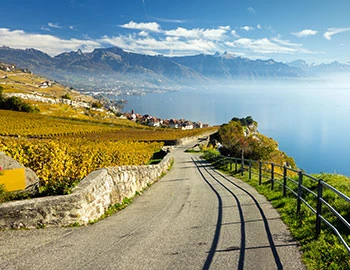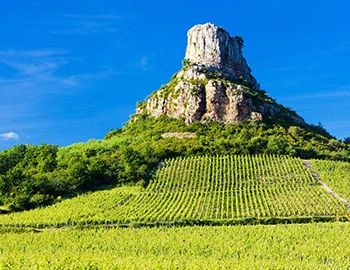Moulis
Moulis: small but fine
With a cultivation area of just 630 hectares, Moulis is the smallest communal appellation in the Médoc. Along with neighboring Listrac, Moulis enjoys a special status, as neither area lies directly on the Girond, and thus neither benefits from the body of water’s climate-modulating effects. The sparse gravel soils of Moulis prodice well-structured yet elegant wines which reach their optimal drinking age relatively quickly.
Red wines from Moulis
The growing area of Moulis resembles a narrow band, 12 kilometres long and just 400 meters wide. Though small, the appellation holds an astonishing range of terroirs, which can be divided into three types. In the east of the area (Grand Poujeaux, Médrac), the soil is dominated by hilltops of pebbles, carried in by the Garonne River during the last ice age (Quaternary Period). In this easily warmed soil with good drainage, Cabernet Sauvignon finds the best of conditions. In the western part of the appellation (Bouqueyan), where sandy loam with varying proportions of Pyrenean gravel and quartz shape the terroir, Cabernet also yields excellent results. In the central part of the region, with its sandy, calcareous loam soils, predominantly Merlot is cultivated.
From rye to wine growing
Because of its distance to the Gironde, this river determines the climate of Moulis far less than in other areas of the Médoc. Instead, the Atlantic influences the microclimate more here. The mixture of a relatively cool climate and easily-warmed gravel soils shapes the character of Moulis wines, which combine fruity elegance and tannin structure well.
Moulis is said to have got its name because there were once many wind- and watermills, which were mainly used to process the rye cultivated here. By the 11th century, local feudal lords and clergy took increasingly to viticulture, while grain farmers and millers later followed suit. In 1892, viticulture had reached its greatest extent. Two hundred producers administered 1,500 hectares, until phylloxera spelled the end of the wine boom.
Cru Bourgeois estates as pioneers
The Moulis-en-Médoc AOC was established in 1938. An extreme frost in 1956 caused the growing area to shrink to 280 hectares. Today, there are once again over 600 hectares of vines in the AOC, cultivated by 49 facilities. The new classification of the crus bourgeois in the Médoc in 2003 was a confirmation of the quality development in Moulis. Today, the two crus bourgeois exceptionnels and seven crus bourgeois supérieurs are among the pioneers of this surge in quality.








